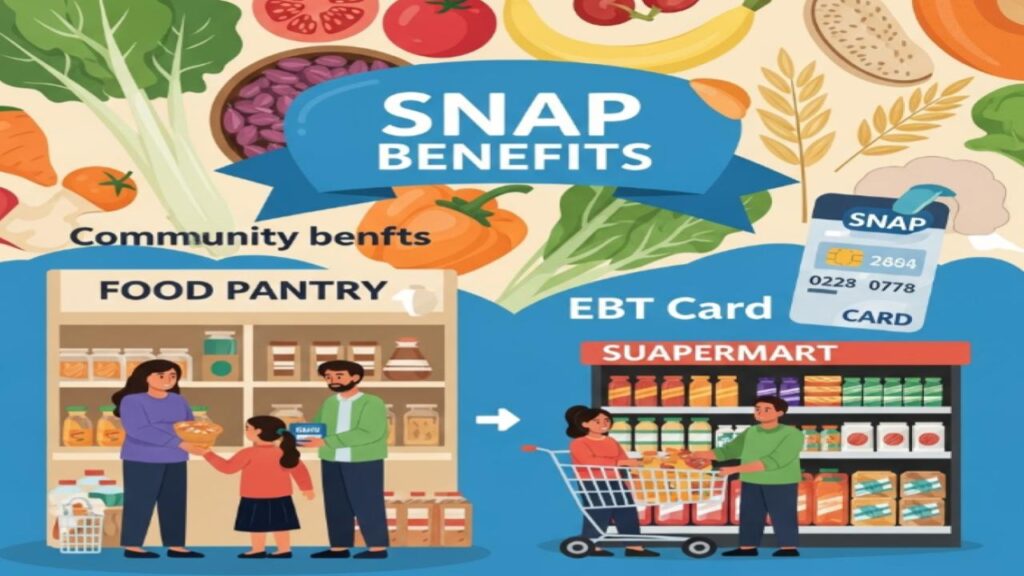President Donald Trump’s 2026 budget proposal—nicknamed the “One Big Beautiful Bill Act”—has set off alarm bells across the country. If passed, it would deliver devastating cuts to Medicare, Medicaid, and SNAP, some of the biggest lifelines for America’s most vulnerable communities.

Why? To make room for extending Trump’s 2017 tax cuts—tax breaks that mostly benefit the wealthy. While this move is being marketed as a fix for fiscal responsibility, critics warn it could lead to millions losing food aid, healthcare access, and financial stability.
2026 Cuts Revealed: Trump’s New Budget
| Category | Proposed Cut | Who’s Affected | Details |
|---|---|---|---|
| Medicare | ~$500 billion (2026–2034) | Seniors, disabled individuals | 4% PAYGO-triggered annual cuts to provider payments. |
| Medicaid | ~$700 billion over 10 years | Low-income families, disabled adults, children | New work requirements, asset limits, frequent eligibility checks. |
| SNAP (Food Stamps) | ~$300 billion over 10 years | 42M+ low-income Americans | Stricter work rules, citizenship verification, benefit caps. |
Trump’s 2026 budget isn’t just about dollars and cents—it’s about who wins and who loses. To keep tax breaks for the wealthy, this proposal would gut life-saving programs for the most vulnerable Americans.
Whether you’re a senior, a single parent, or someone working two jobs to get by—this bill could change your life. Now’s the time to get informed, get involved, and speak up—before it’s too late.
What’s Actually Inside the 2026 Trump Budget?
The House passed this bill in a 215–214 cliffhanger vote, with barely any cushion. The plan’s main goal is to make the Trump-era tax cuts permanent—which would cost the country $2.3 trillion over the next decade, per the Congressional Budget Office (CBO). To “pay for it,” the administration is pushing brutal cutbacks to essential federal support systems.
Medicare Cuts: How They’ll Hit You
The Congressional Budget Office (CBO) estimates that the proposed budget would increase the federal deficit by $2.3 trillion over the next decade. Under the Statutory Pay-As-You-Go Act (PAYGO), such an increase could trigger automatic spending cuts, including up to $500 billion in Medicare reductions from 2026 to 2034. These cuts would be capped at 4% annually and could affect payments to providers, potentially leading to reduced access to care for beneficiaries.
The Numbers Don’t Lie
- Medicare could face $490 billion in reductions from 2026 to 2034.
- These reductions stem from PAYGO laws—automatic spending cuts triggered by increased deficits.
Who’s in the Crosshairs?
- Seniors on fixed incomes
- Disabled adults and retirees
- Healthcare providers and hospitals
Although benefits themselves won’t be directly slashed, fewer doctors might accept Medicare, and wait times could skyrocket.
Medicaid: The Axe Swings Harder
President Donald Trump’s 2026 budget proposal, known as the “One Big Beautiful Bill Act,” introduces significant changes to Medicaid, aiming to reduce federal spending by approximately $723 billion over the next decade. These changes could result in substantial impacts on low-income individuals and families who rely on Medicaid for healthcare coverage.
Massive $700 Billion in Cuts
The proposal attacks Medicaid with:
- Work requirements for adults aged 19–64
- $1 million asset limit (including home equity)
- Monthly eligibility redeterminations
These changes could accidentally boot people from the program, even if they’re eligible. The CBO says around 8 million people could lose coverage, but analysts say that number could rise to 15 million.
SNAP Cuts: Food Aid Under Siege
President Donald Trump’s 2026 budget proposal, dubbed the “One Big Beautiful Bill Act,” introduces significant changes to the Supplemental Nutrition Assistance Program (SNAP), aiming to reduce federal spending by approximately $290 billion over the next decade. These proposed cuts could have profound effects on millions of low-income Americans who rely on SNAP for food assistance.

What’s on the Line?
SNAP, a lifeline for over 42 million Americans, could be slashed by:
- $300 billion in total cuts over 10 years
- Expanded work requirements up to age 64
- Tighter eligibility—no help for undocumented families or recent legal immigrants
What It Means
Families could see:
- Reduced monthly grocery budgets
- Benefit freezes, even if inflation spikes food prices
- Paperwork traps knocking people off the rolls
Why Is Trump Making These Cuts?
The proposed cuts in President Trump’s 2026 budget are driven by a combination of fiscal strategies aimed at reducing government spending, ideological commitments to limited federal intervention, and political objectives to fulfill campaign promises. While supporters argue these measures will promote economic growth and self-reliance, critics warn of potential adverse effects on vulnerable populations who rely on programs like Medicare, Medicaid, and SNAP. As the budget moves through the legislative process, these debates will continue to shape its final form and impact.
- The 2017 tax cuts favor high earners and corporations.
- Making them permanent will add $2.3 trillion to the federal debt.
- Under PAYGO, that triggers mandatory cuts across programs like Medicare.
So instead of raising taxes, this proposal slices into programs the working class depends on.
The Political Blowback
Even Trump’s own party is feeling the heat.
- Far-right GOP members say it doesn’t cut enough.
- Moderate Republicans worry about blowback from seniors and low-income voters.
- Democrats have labeled it “Robin Hood in reverse.”
And advocacy groups are mobilizing, from AARP to Feeding America, flooding Senate offices with opposition calls.
Real People, Real Impact
Let’s look at how this budget could hit you:
If You’re a Senior:
- You might lose access to certain doctors.
- Wait times at clinics could double.
- You could face out-of-pocket costs for procedures once covered.
If You’re a Parent on Medicaid:
- You’ll have to prove work status monthly.
- A missed form could drop your kids from coverage.
If You Rely on SNAP:
- You could lose benefits without 20–30 hours of verified work weekly.
- Even minor pay raises could make you ineligible.
- Future benefits may not keep up with food prices.
How to Protect Yourself Right Now
- Verify Your Eligibility: Keep Medicaid/SNAP paperwork current.
- Talk to Providers: Ask your doctors if they’ll continue with Medicare.
- Use Advocacy Groups: Groups like AARP and Feeding America offer help.
- Call Your Senators: The bill’s in their hands now. Make noise.
Frequently Asked Questions (FAQs)
Is Medicare getting cut under this bill?
Not directly—but payments to doctors and hospitals will drop, which could reduce access and care quality.
What’s the deal with Medicaid work rules?
Adults ages 19–64 will have to show employment proof or risk losing benefits—even if they’re caregivers or have inconsistent hours.
Could I lose my SNAP food benefits?
Yes, if you can’t meet stricter work rules or if your citizenship status doesn’t qualify under the new plan.
Is the bill final?
Nope. It’s passed the House, but the Senate must still vote. Public backlash could flip key votes.






